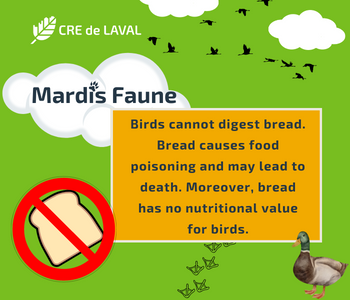
Laval is home to an exceptionally rich and diverse avian fauna. For as long as we can possibly remember, our winged neighbors have sparked awe and wonder among both young and old, be it during a forest walk or while having breakfast on the patio. For an optimal relationship with birds, a few good practices are necessary.
What a joy to feed birds and enjoy a privileged encounter with them; who has never fed a chickadee in the palm of their hand, or attracted ducks with picnic remnants? Moreover, many of you have probably – and proudly – set up lovely feeding stations on your balconies!
Despite the very best intentions in the world, our actions sometimes do more harm than good to the avian fauna. Let’s go over some important information that we invite you to spread widely with those around you for an optimal cohabitation with birds!
Bird feeders : good idea… provided they are cleaned often
Bird feeders are of course an amazing and simple way to help birds, but make sure to carefully clean them on a regular basis. Indeed, birds may catch diseases by eating mouldy seeds or through other sick birds by being in contact with accumulated excreta on the feeding stations. The most common avian diseases in this particular context are salmonella, trichomoniasis, smallpox and conjunctivitis (Oiseaux Canada). By periodically ensuring the cleanliness of your bird feeders, you are directly helping decrease the risks that your small visitors catch one of these diseases while passing by.
Also, if you notice an ill-looking bird coming to your feeding station, it is important to remove the latter immediately for a few days (up to two weeks) to avoid the return of the sick bird, and to clean it properly as well before putting it back outside, in order to reduce the risks of disease spread for other birds. GoOiseaux notably insists on the seriousness of mycoplasmosis (conjunctivitis) – which can be noticed by a bird’s infected or puffy eyes -, known for spreading very easily among individuals.
Bread: a hard no
Bread – the preferred (and processed) food that many like to throw at birds and ducks with great hilarity. And for good reason, as they will devour it! However, extended awareness efforts are being deployed since several years by environmental organizations and municipalities to inform the population about how harmful to birds this practice is.
Indeed, bread has zero nutritional value for birds. It can even prove lethal, since once swallowed, soaked bread (from water for example) will expand and block the digestive system. Therefore, the bird cannot feed itself anymore and may die of starvation. Moreover, bread crumbs left on the ground will absorb humidity and promote pathogen development to which birds may be exposed, making them sick (CANOPÉE - Le réseau des bois de Laval).
In a nutshell: bread does not grow in nature, it is therefore logical to not feed it to birds!
Nesting period: be on the lookout!
Did you know that flight feathers are shed by ducks during the nesting period, which can limit their movements? One more reason to watch your cats and your kids, as they sometimes enjoy chasing birds.
The Canadian Wildlife Federation has established a list of things to do or to avoid in order to protect the chicks that you might see.
QuébecOiseaux also offers a series of wise advice to help you choose and properly install a nesting box on your property.
Wild turkey: an ever growing presence on the territory
Opportunistic and indigenous species, wild turkeys are very present in urban areas, regardless of their quite recent establishment in the province. They are particularly fond of agro-forest areas, frequenting hardwood bushes and farm fields. Mostly active in the spring, when females are looking for a place to make their nest and in the fall, when males are seeking for a place to spend the winter, wild turkeys have several predators, including red-tailed hawks, coyotes, eagle owls, bobcats and fishers. They are also ill-adapted for winter and, like all birds, can be pathogen carriers (Quebec government).
Quite cautious by nature, wild turkeys usually flees from humans. In case of an encounter, it is recommended to avoid feeding them and, if the situation so required, to scare them by making noise or brandishing an impressive object such as an umbrella (Quebec government).
Did you see a wounded bird?
A bird that seems hurt or abandoned may simply just be a chick; in fact, more than half the birds brought to the organization Le Nichoir are young ones that, for the majority of them, did not need help. Le Nichoir also created a fact sheet (in French) that will allow you to determine if indeed the bird you found needs your assistance or not.
Our chimneys: an essential habitat for the chimney swift
Chimney swift populations having decreased by 88% since 1970, this species now has an endangered status. The causes explaining this decline would be due to the decrease of the abundance of prey, which are flying insects, and the lack of availability of nesting sites, which are old masonry chimneys (QuébecOiseaux).
The particularity of the chimney swifts is their choice of nesting site; if they are unable to find a snag (dead tree) of an appropriate size, they will firmly hand their nest to the inner wall’s masonry chimneys, with saliva acting as glue… Before leaving for the south during the fall migration, some chimneys are used by some dozens - if not hundreds – as a resting area. Do not worry if a chimney swift takes up residence (temporarily) in your chimney; their presence often goes unnoticed, and does not constitute a fire hazard. They will not cause any damage to the structure of your chimney either.



